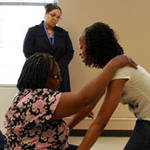 More and more long term care facilities and home health care agencies are turning to online inservices for comprehensive coverage of inservice topics and the convenience of online learning.
More and more long term care facilities and home health care agencies are turning to online inservices for comprehensive coverage of inservice topics and the convenience of online learning.
Online CNA inservices allow the learner to move at his or her own pace. Graphics and sound enhance the learning experience, making it more pleasurable to learn material.
Packages designed for facilities or agencies make online CNA inservices a bargain, and there are a variety of purchase options to suit every need.
Pedagogy, Inc., a national provider of online continuing education and training courses in the health care professions is very pleased to announce that LTCS Books, a nationally recognized provider of Nursing Care plans, Certified Nurse Aide training, Home Health Care education, and MDS 3.0 Coding has joined forces.
Speaking of the new partnership with LTCS Books, Capra Dalton, Pedagogy’s CEO states “This is really exciting for Pedagogy. LTCS Books has provided nursing care plan books and staff development to over a third of the long term care facilities in the nation. We are very happy to now offer LTCS’s expertise in an online format.
Facilities will now be able to offer online education through any device with an internet connection, any time of day or night, freeing staff from the costly and time consuming burden of providing staff training, orientation and inservice education in the traditional classroom setting. Pedagogy’s online Learning Management System will also allow complete education management in a paperless, convenient format.”


